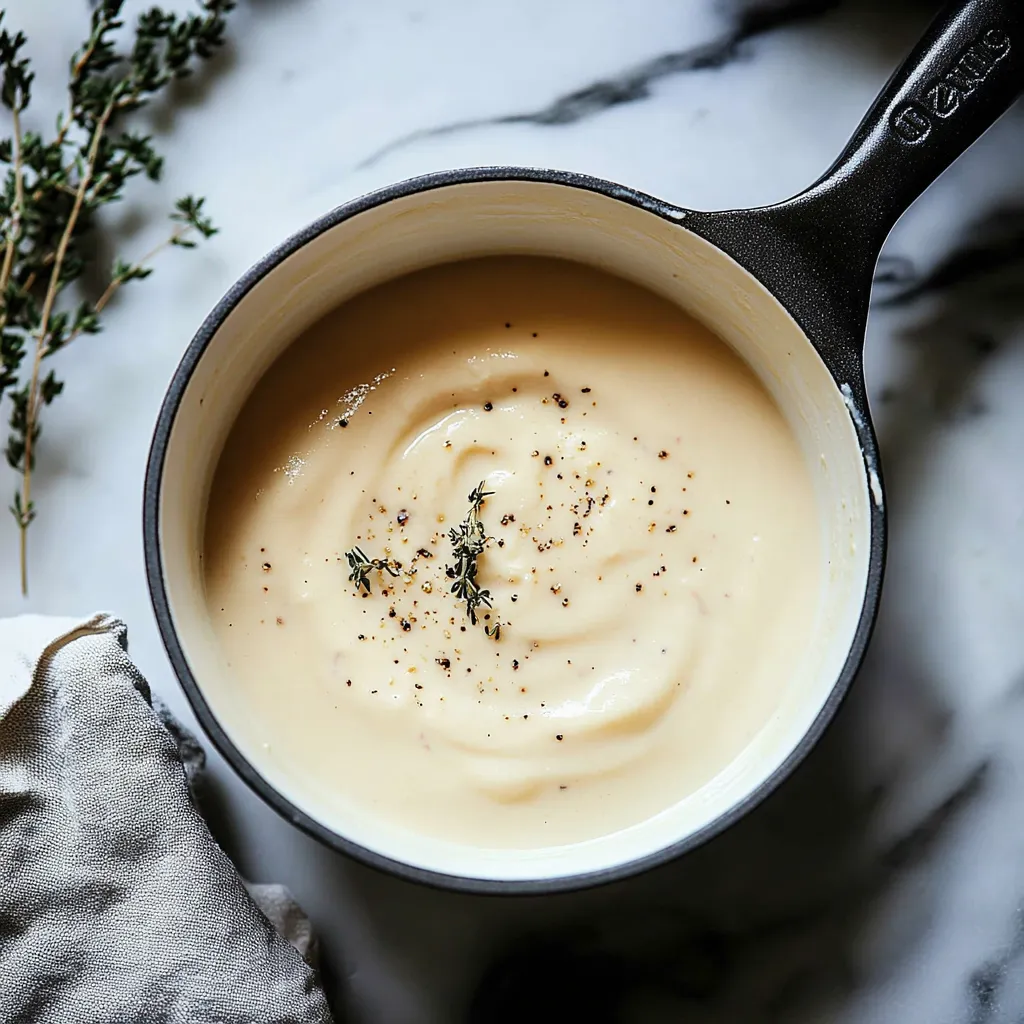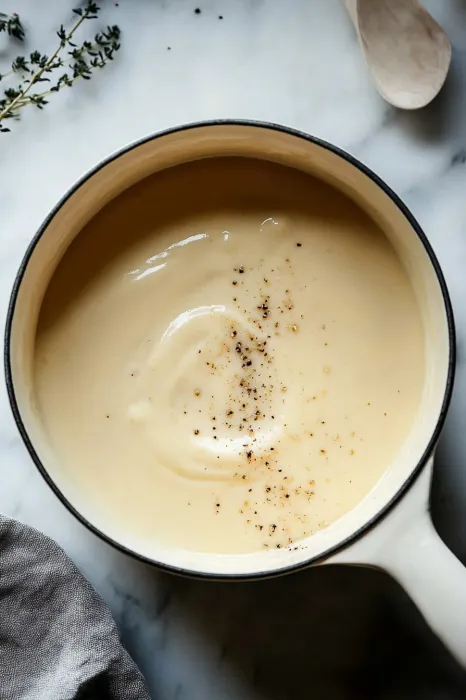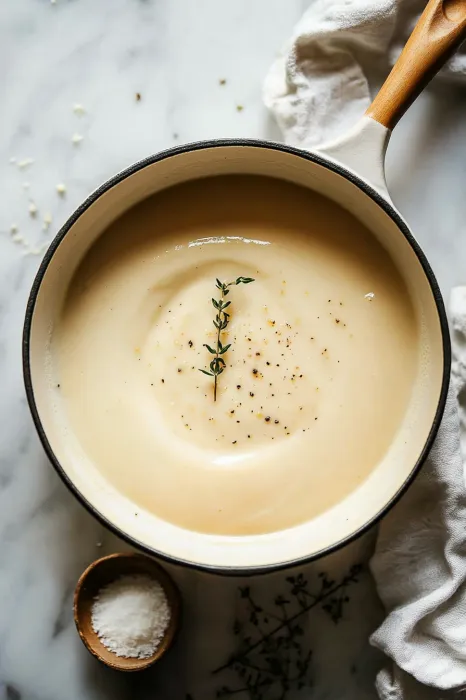 Pin it
Pin it
This smooth white sauce, called bechamel, comes from French tradition and works as an amazing foundation for so many other sauces. Using just a few simple items, this basic version gives you a velvety, multipurpose sauce that can turn everyday meals into something magnificent.
I stumbled on the wonder of homemade bechamel while trying to make my lasagna better. After using store-bought sauces for years, the change was striking - my family instantly picked up on the deeper, more layered taste that only comes when you cook from scratch.
Ingredients
- Whole milk: Gives the right amount of creaminess and makes that smooth feel that's key for a proper bechamel
- Unsalted butter: Lets you manage how salty it gets while giving the needed fat for your roux
- All purpose flour: Works to thicken everything up and builds the base of your sauce
- Salt: Brings out all the tastes - grab some fine sea salt for top results
- White pepper: Adds a gentle heat without dark spots that you'd get with black pepper
- Ground nutmeg: This extra touch is standard in French cooking and brings a faint warmth
Step-by-Step Instructions
- Prepare the Milk:
- Slowly warm two cups of milk in a small pot over low heat. Don't rush by turning up the flame or you'll burn the milk. The milk should feel warm but not bubble when added to your roux.
- Create the Roux:
- Melt four tablespoons of butter in another medium pot over medium heat until it starts to bubble slightly. Dump in your quarter cup of flour all at once and start whisking right away. The mix will form a paste fast - that's your roux. Keep whisking and cooking for around two minutes to get rid of the raw flour taste while keeping a light color.
- Combine with Care:
- Now comes the key moment when your sauce takes form. Start adding the warm milk to your roux in a thin, steady flow while whisking non-stop. Adding bit by bit stops lumps from showing up. The first bits will make a very thick blend but keep adding milk and whisking until it's all mixed in.
- Develop the Sauce:
- Cook the sauce over medium low heat for about 5 to 7 minutes, stirring often with your whisk or wooden spoon. Watch as the sauce slowly gets thick enough to coat the back of a spoon. You'll know it's right when you can run your finger through the sauce on the spoon and it leaves a clear trail.
- Season Perfectly:
- Add your quarter teaspoon of salt, eighth teaspoon of white pepper, and maybe a tiny bit of nutmeg. Mix well to spread the seasonings all through the sauce. Taste and tweak if needed - just remember if this sauce is going into another dish, you might want to go easy on the seasoning.
 Pin it
Pin it
The type of butter you pick makes a big difference in this simple sauce. I once treated myself to fancy European butter with extra fat for a dinner party, and guests actually noticed how outstanding the sauce tasted in my chicken and mushroom crepes.
Mastering the Perfect Consistency
The best bechamel should stick to the back of a spoon but still pour easily. If your sauce gets too thick, just stir in a bit more warm milk, one tablespoon at a time, till you get it right. On the flip side, if it seems too runny, just keep cooking it longer so more water can steam off. The sauce will also get a bit thicker as it cools, so keep that in mind when checking how thick it is.
Troubleshooting Lumps
Even kitchen pros sometimes get lumps in their bechamel. If this happens, don't worry. For small lumps, stirring really hard might fix it. For bigger lumps, pour the sauce through a fine strainer before serving. To avoid lumps from the start, make sure your roux is smooth before adding any milk, and pour the warm milk in slowly while stirring all the time.
Flavor Variations
While this standard recipe makes a great classic bechamel, you can easily change it up for different dishes. For an onion flavor, warm half an onion stuck with two cloves in the milk before straining and going on with the recipe. For a cheese sauce, just mix in about a cup of shredded cheese when off the heat. Toss in fresh herbs like thyme or bay leaves while cooking, then take them out before serving for light aromatic hints.
 Pin it
Pin it
Frequently Asked Questions
- → What are common uses for a white sauce?
White sauce, also called bechamel, works well in pasta, casseroles, gravies, or hearty soups.
- → How can I make this gluten-free?
Swap regular flour for gluten-free flour or cornstarch—it works just as well.
- → How do I avoid lumps in the mix?
Add warm milk slowly while stirring the roux nonstop until smooth.
- → Can this sauce be stored?
Yep, pop it into an airtight container and refrigerate for up to two days. Reheat gently and whisk for smoothness.
- → What else can I use instead of whole milk?
Try 2% or skim milk for a lighter option. Non-dairy alternatives work too but change the creaminess.
